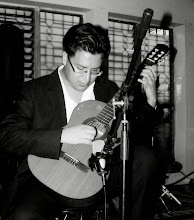Thoughts on the similarities of
Traditional Music made around the world
Essay for the University of Pennsylvania
Music, whether it is made for commercial meanings or not, is something that is written or composed in order to be listened by as much people as possible. For every living musician, composer, this is something that actually is one of the reasons they keep making music. To create an impact, a deep effect, to give a message, to change (and challenge) the world and the audience. In my opinion, native musicians or traditional music composers try to seek this goal as well. In most cases, aboriginal music has been used (by the natives) for ritual purposes, spiritual healing, as "incidental music" (For example, Pigmy music and hindenwhu) just like western classical composers do. I believe they certainly want to reach more people, if possible, no matter the language or geographical barriers, considering the role of aboriginal music of spiritually healing the listener through the drone-like sounds, chants, etc.
in the case of aboriginal art, myths, rituals and musical instruments I believe that it should be shared to the whole world to see and experience. This would not be an economic exercise. This would be something that should be done in order to reach other cultures, so the audience could have a better understanding of the world outside their countries or cultural background. It would be something done in order to integrate more the diverse cultures of the world. And I think it would even help people find that we are not so different than people living in other cultures, or ethnicities. Bringing the experience of rituals outside their original context may be affected, but if the performers of the rite focus on the real intention only, and not in the intention of making a "big display of costumes", the audience may engage into the experience as the performers originally intended.
I believe this would not be a problem. I think this actually would help both parties (The aborigin musicians/performers and the audience). It will help the aborigin musicians to keep doing their art and be funded to expand their project, and it will help the audience to understand that our world is so diverse, but similar at the same time. We may find that our cultures share a lot of things, be it the same musical scales, clothing style, physical attributes, etc.
To give you an example, I'll discuss briefly how Andes aboriginal people (formerly known as the Incas) have a lot in common with ancient Chinese people. The Incas were a powerful culture back in the day, it was an empire that covered almost all South America. The Inca society had a perfect social structure, where everyone had access to any kind of resources, be it food, gold, or clothing. And they had one of the most advanced numerical methods of their time. Their music was (and still is, preserved by Incas descendants) pentatonic, very minimalistic (just like the Minimalist music created by Steve Reich and Philip Glass) but also very powerful. If you know something about chinese history, you'd know that Chinese society was pretty much ahead of their time as well, that it was an empire that covered almost all Asia, their social structure was kind of feudal, but their music was pentatonic as well. Not made by the same instruments as Incas, but pentatonic in the end.

No comments:
Post a Comment